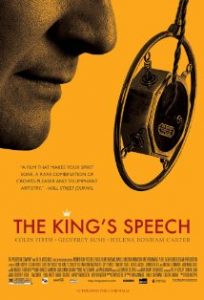As Chair of International Stuttering Association I struggled for years to convey accurate public awareness messages about stuttering. I also was frustrated to see the conflict within the SLP profession as they too struggled to define exactly what it was they were researching, treating and discussing. Providing a solution to all this has occupied my mind for some time. I see it as the most valuable thing that can be done for the welfare of PWS.
I believe the same difficulties would have faced the condition known as coughing if we were not able to use words like asthma, emphysema, tuberculosis TB, and inhalation etc…
That is, our understanding will only develop if we create more words around stuttering and agree on common understanding. At the moment the word stuttering means different things to different people. Is it a) speech behaviour , b) a syndrome or c) the symptom of a syndrome? What is your answer? Is it the same after reading the rest of this mail. (If short of time please be sure to read point 6.)
- Stuttering is a speech behaviour which, like all other conscious human behaviour, is related to intentions, perceptions, beliefs, emotions and responses. This can be conceptualized as inter-relating parts of a hexagon.
- Not all stuttering is associated with anxiety or psychiatric ill health.
- To say all stuttering is a social anxiety disorder is as much a generalisation as saying all stuttering is genetic.
- Stuttering is the behaviour of dysfluent speech which may or may not be related to genetic factors and/or Social Anxiety Disorder (SAD) and/or physical trauma etc.
- Where stuttering is related to Social Anxiety Disorder then both conditions interweave to make it impossible to tell where one ends and the other begins. Therefore a specific term is needed for this condition. That term is Stuttered Speech Syndrome (SSS).
- Stuttering is not a social anxiety disorder. SSS is a social anxiety disorder. Stuttering is a symptom of this disorder (and stuttering may exist independently of SSS.)
(Example. Coughing is not an infectious disease. TB is an infectious disease. Coughing is a symptom of this disease. Coughing may exist independently of TB) - SSS allows distinction between the severity of impact and the severity of stuttering. (research has shown there is no direct correlation between severity of stuttering and severity of its impact on the life of the person stuttering. A person with an almost inperceptible stutter may be severely affected by it. Therefore, without the term SSS it is impossible to accurately link stuttering with disability)
- SSS gives a direct link to the psychology/psychiatry professions because it links stuttering to the disability of Social Anxiety Disorder which is a DSMIV listed disorder.
- Social Anxiety Disorder is also known as Social Phobia. It refers to an arbitrary level of social anxiety, determined by nominated surveys (eg LSAS) or clinical interviews, beyond which is regarded by the American Psychiatric Association as pathological.
- The presence of SAD infers significant emotional ill-health and indicates it is impossible for the sufferer to think logically in stressful social situations. This has an impact on therapy. Rational advice about what to think and what to do is relatively useless to the phobic brain. Instead therapies aimed at removing the phobia are necessary. (eg CBT, desensitisation, role play and relaxation therapy are of more use).
- Stuttering without co-existing SAD can be lessened, and sometimes eliminated, by a combination of CBT and speech therapy advice.
- A covert stutterer is someone who uses the strategy of covert stuttering (word substitution and word and situation avoidance.) They may not necessarily have SSS. SSS would be an appropriate diagnosis only if their covert stuttering was associated with diagnosable SAD.
